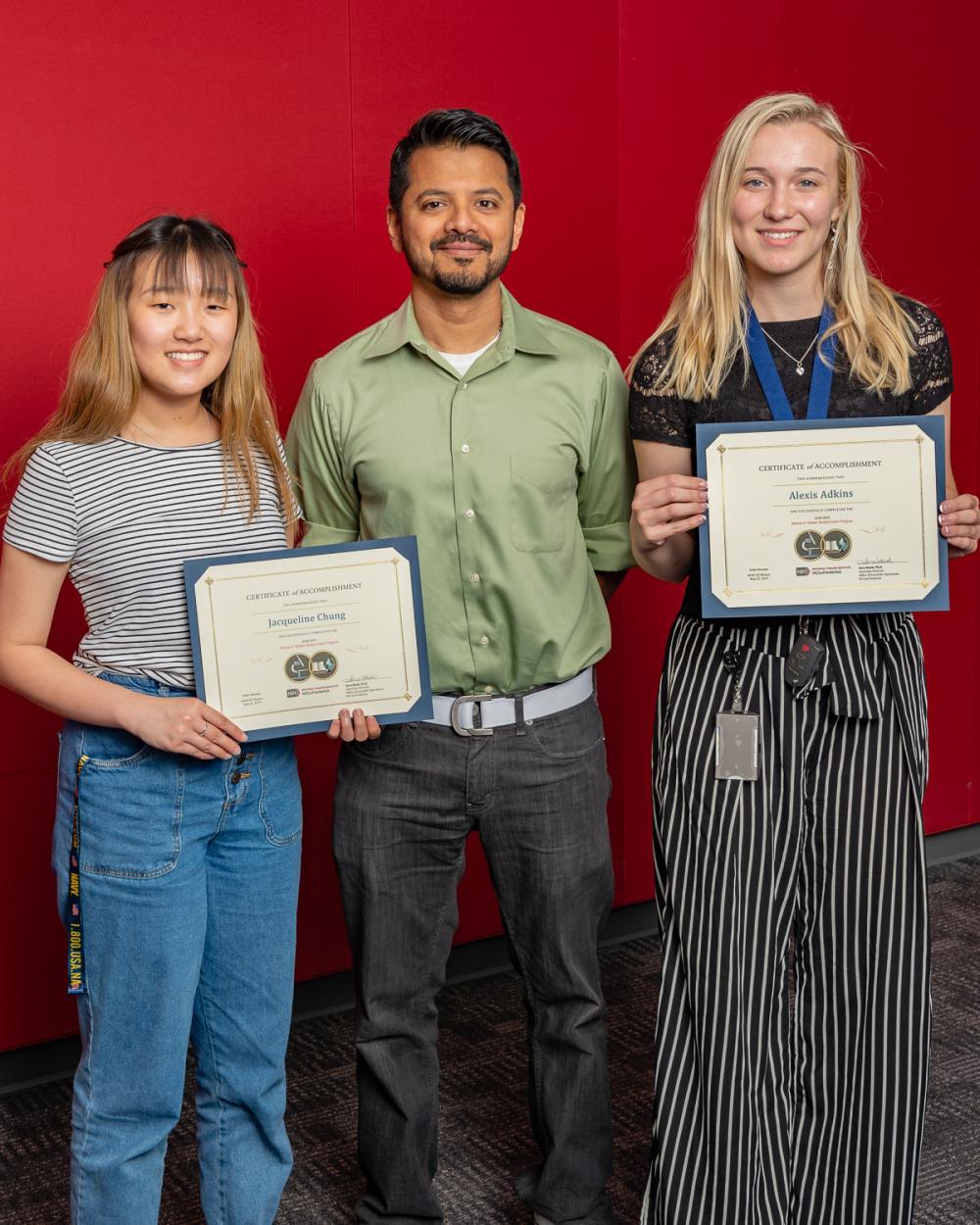At the annual Spring Research Festival on Fort Detrick, they placed first in the First-in-Development Cell Biology category.
At the Frederick County Science and Engineering Fair, they won the Intel International Science and Engineering Fair Award of Excellence in Computer Science and placed second in the Molecular and Cell Biology category.
Yet despite these accomplishments, Alexis Adkins and Jacqueline Chung said they didn’t consider themselves “real scientists.”
Maybe that’s because they lacked a science degree—or, until very recently, even a high school diploma. However, they are indisputably real scientists.
Adkins and Chung are recent graduates of the Werner H. Kirsten student intern program. For the past year, they interned at the Frederick National Laboratory for Cancer Research’s Center for Molecular Microscopy under the guidance of Kedar Narayan, Ph.D., senior scientist and group leader.
For their multi-award-winning poster, they studied the shape of mitochondria as cells age. To do this, they examined a young and old cell by using focused ion beam scanning electron microscopy (FIB-SEM), which generates highly detailed 3D images. Then, using image processing and 3D visualization techniques, they identified and extracted the mitochondria from the two images—173 from the young cell and 58 from the old. They evaluated differences in the mitochondria, considering a variety of metrics, including elongation, flatness, curviness, and volume.
“The young mitochondria are more uniform, and older ones are all kind of funky shapes,” Adkins said, succinctly explaining their findings. In addition to giving the duo laboratory experience, their internship experience honed a skill that scientists notoriously struggle with—the ability to communicate their findings to the public.
At the Spring Research Festival, where they competed against the scientific staff at Fort Detrick and the National Cancer Institute as well as other students, Adkins and Chung realized that a different communication style was necessary.
“We need to know our audience to communicate appropriately,” Adkins said. “We can’t use the same language for a high school kid and a Ph.D. scientist.”
“At NIH, we got more feedback on the FIB-SEM technology and how they used it,” Chung added. “At the science fair, people had never heard of FIB-SEM.”
Their ability to communicate with both scientific and lay audiences can be seen even in the title of their poster: “3D visualization and quantitation of nanoscale mitochondrial architectures from FIB-SEM images of mammalian cells (Or, do mitochondrial shapes change as cells age?).”
At first, they found presenting to a room full of scientists intimidating, but after repeating their presentation over and over, their confidence grew. They attributed their success to practice and to their mentor.
“Kedar was always telling me ‘you have to put yourself out there more,’” Chung said. “I never realized how important it was, until after the presentation, people started saying they loved it, and I realized I’ve really improved.”
This tied directly into her advice for the incoming WHK interns: “Get out of your comfort zone. Don’t be afraid of failure.”
Chung will be attending the University of Toledo in the fall on the pre-med track and minoring in music, with a specific interest in music therapy. Adkins, who will be the first in her family to attend college, will be starting at the University of South Carolina, majoring in experimental psychology.
When the pair was asked whether there was anything else they wanted to add, Adkins said, “I just want to thank Kedar. He is so busy, but he took time to pass on what he knows to two kids who don’t even have high school diplomas. We just want him to know that we are so, so grateful.”


